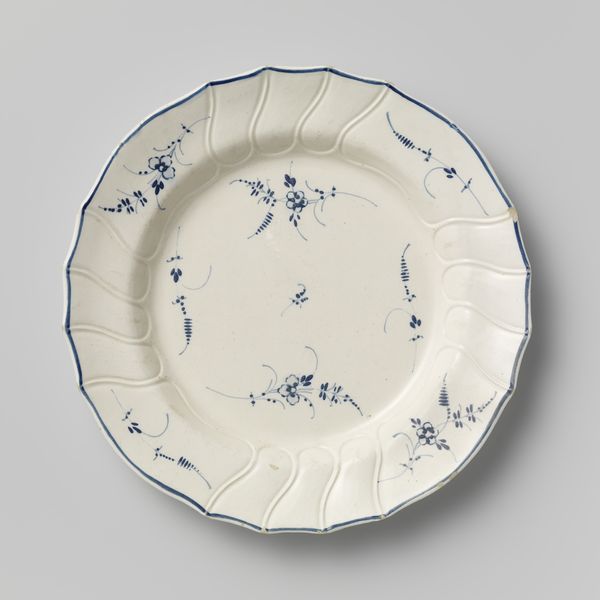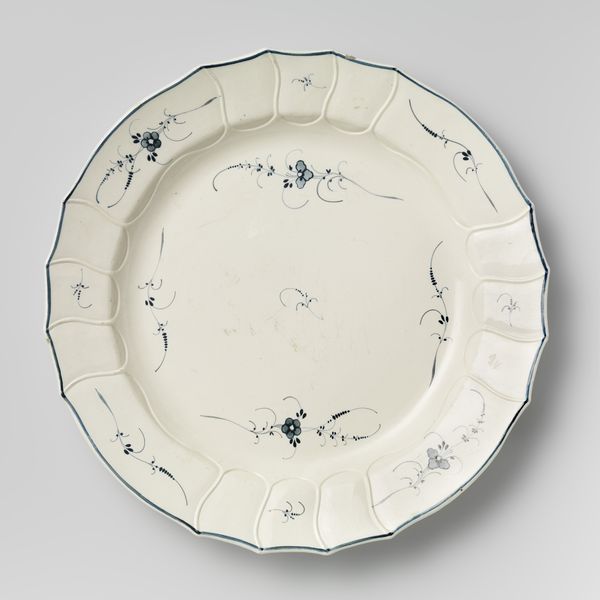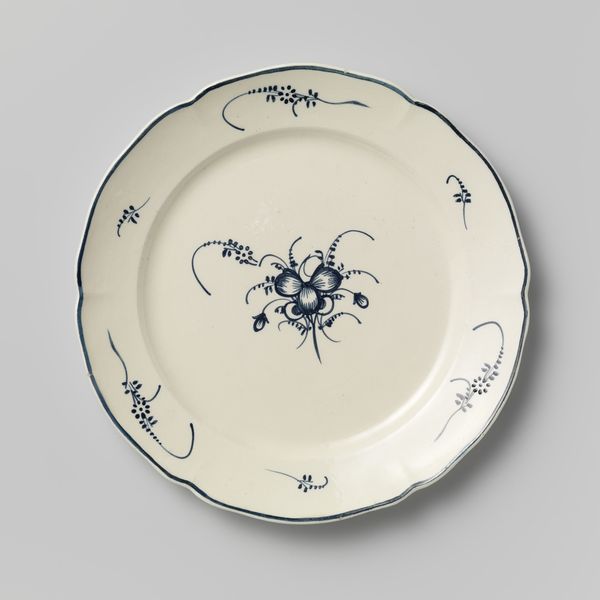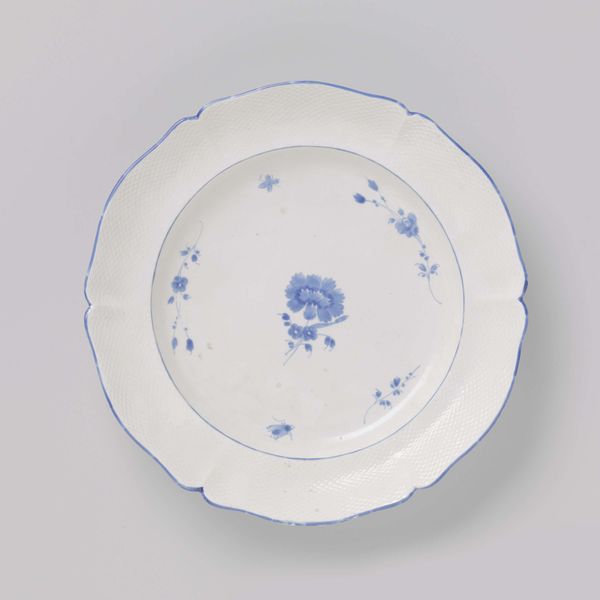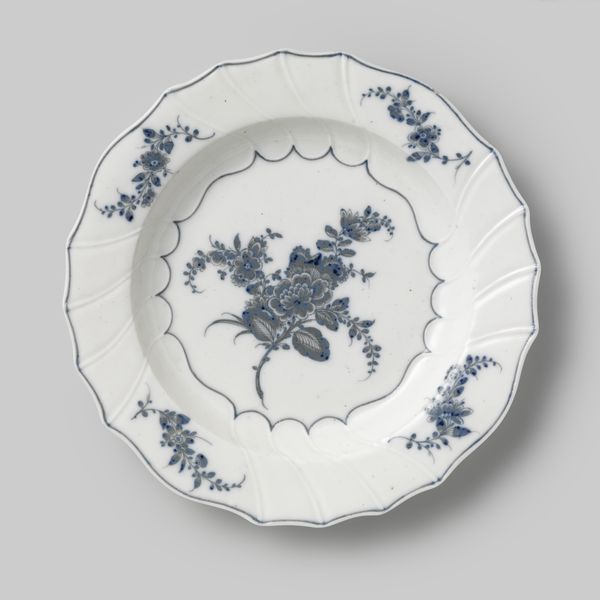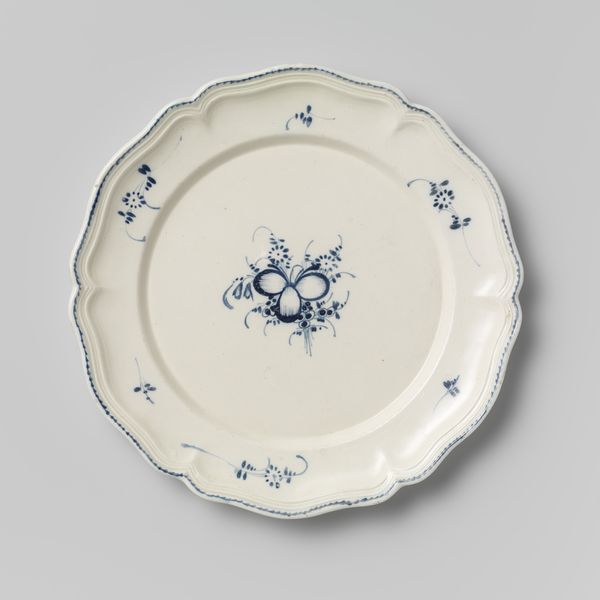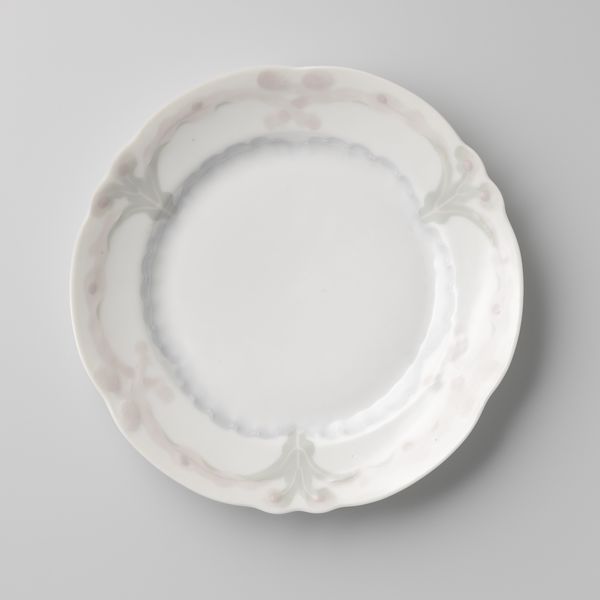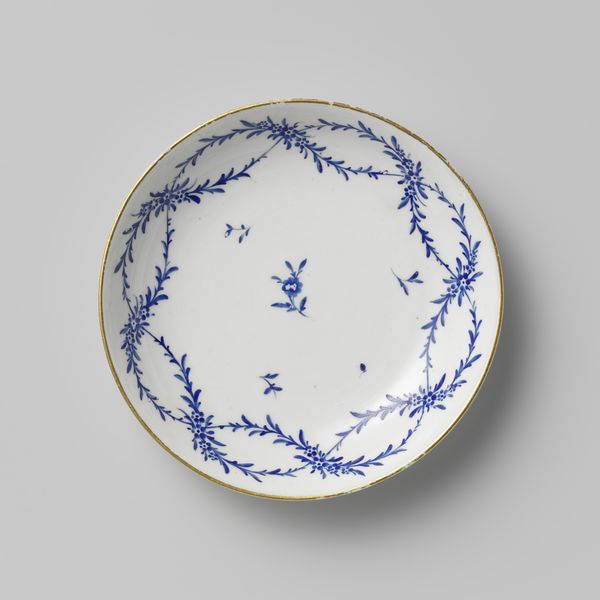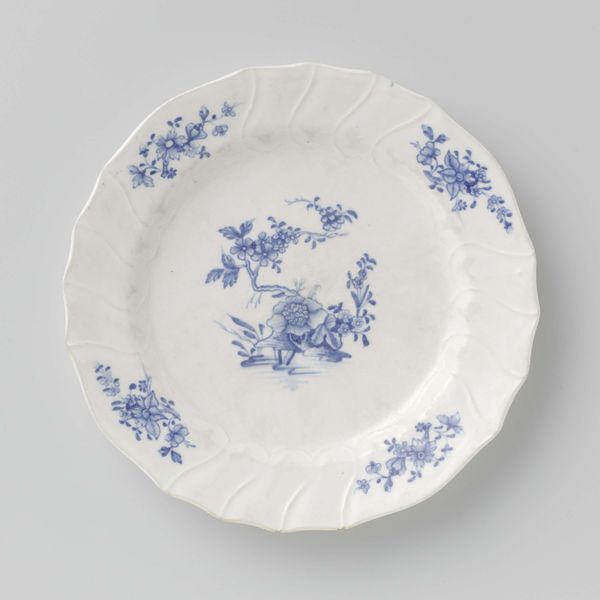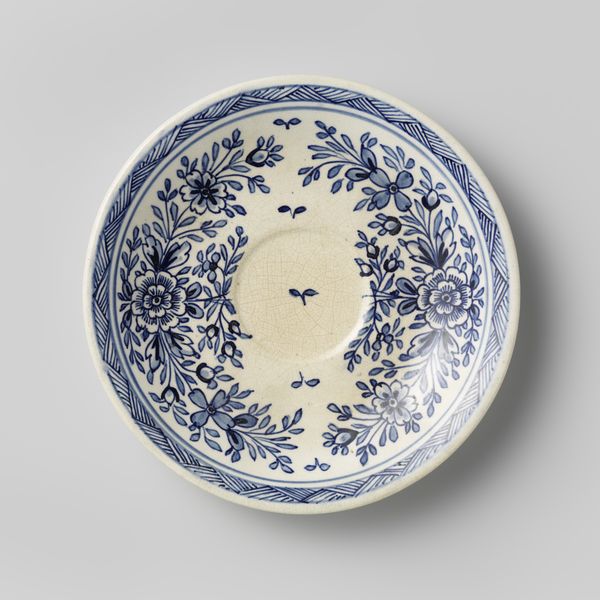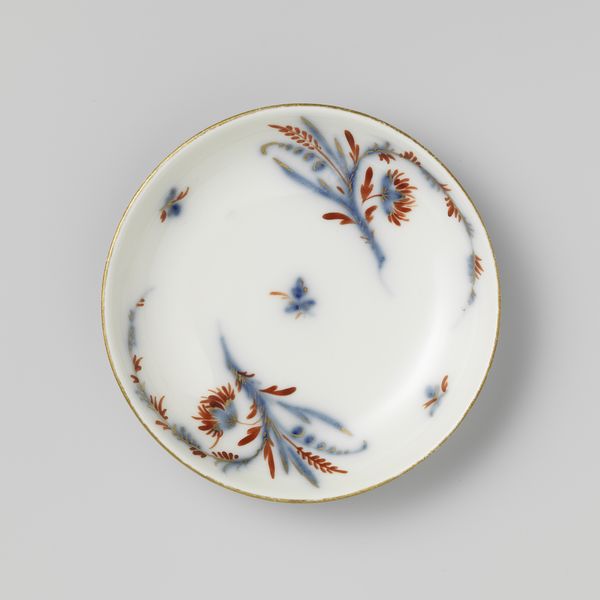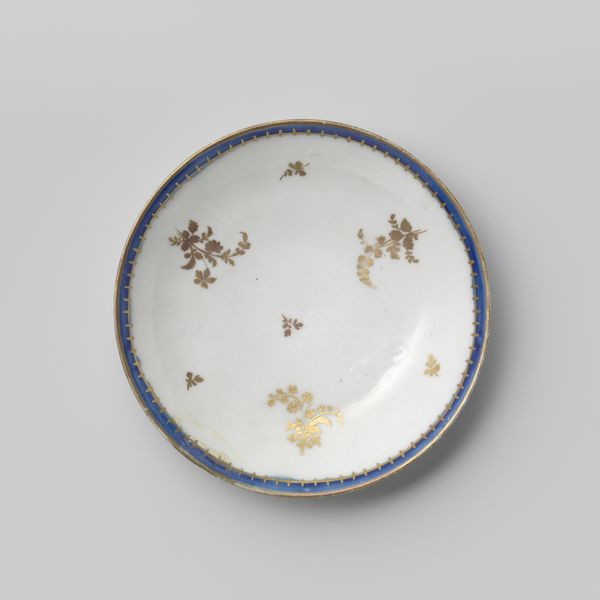
ceramic
#
ceramic
#
ceramic
#
decorative-art
Dimensions: diameter 21.8 cm, height 2 cm
Copyright: Rijks Museum: Open Domain
Curator: Editor: Let's talk about this earthenware plate, made by Boch, sometime between 1780 and 1820. I'm drawn to its simplicity – the white ceramic, delicate blue floral patterns, and that subtly scalloped edge. What strikes you most about this piece? Curator: Well, consider the broader context: Who was producing ceramics like this, and for whom? Boch, as a manufacturer, operated within a very specific economic framework. We should consider what resources they had, where the materials came from, who did the labor? The materiality of this seemingly simple plate connects it to vast systems of production and consumption. Editor: That’s fascinating. So you’re saying it's not just a decorative object, but a document of its time? Curator: Precisely. How did the making of fine earthenware transform the status of ordinary clay, turning something common into a commodity? The blue floral decoration too–is that meant to imitate porcelain from the East, an effort to democratize something luxurious? Editor: So the labor and materials become more than just elements of the artwork. Curator: Absolutely! The plate whispers stories of trade routes, worker's conditions and the complex relationship between artistic expression and material constraints. Who was buying and using pieces like this, what value did they ascribe to hand-decorated vs plain dishware? Editor: That shifts my understanding completely. Now I’m looking at it thinking about the social implications of owning a mass-produced ceramic object versus using a handcrafted item, and all the hands that touched the plate before it even made it to a table. I see the historical context in the physical object. Thanks for pointing that out! Curator: Exactly! Thinking about objects materially offers fascinating insight. It encourages us to question our notions of taste, class and what makes art 'art'.
Comments
No comments
Be the first to comment and join the conversation on the ultimate creative platform.
